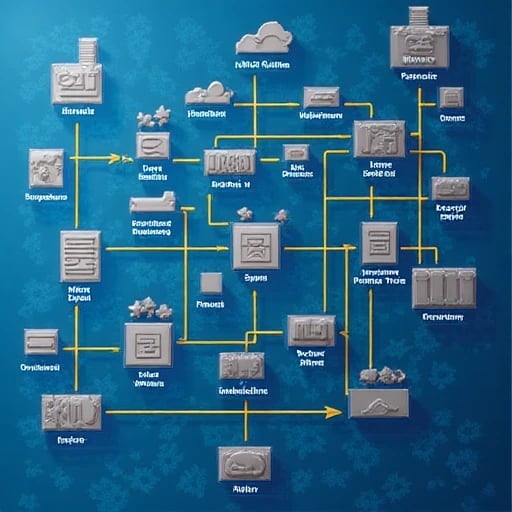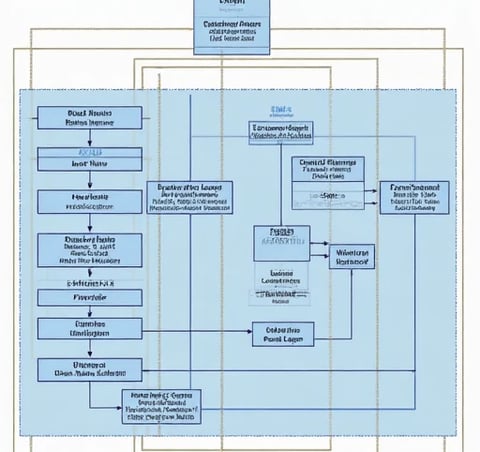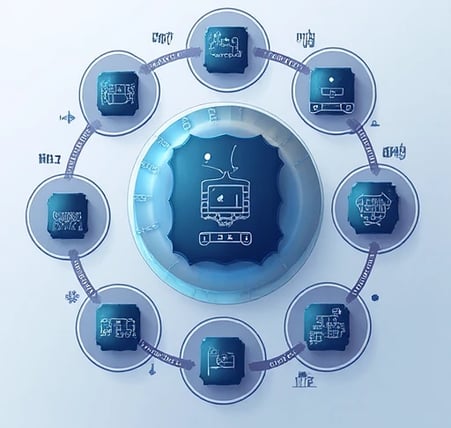ANNABELLEKENT
I am ANNABELLE KENT, a synthetic biologist and systems engineer pioneering the design of programmable communication protocols for cellular signal transduction. With a Ph.D. in Synthetic Signaling Networks (Stanford University, 2022) and a postdoctoral fellowship at the MIT-Wyss Institute (2023–2025), I specialize in re-engineering biological signaling pathways using principles from information theory, control systems, and molecular engineering. As the Director of the Cellular Communication Lab and Lead Architect of the NIH-funded SynSigNet Consortium, I develop modular frameworks to encode, transmit, and decode molecular signals with unprecedented precision. My work on noise-robust signaling circuits earned the 2024 Science Translational Medicine Trailblazer Award and is foundational to Novartis’s next-generation smart therapeutics.
Research Motivation
Cellular signal transduction—the molecular "language" governing life—coordinates everything from immune responses to tissue regeneration. Yet, its inherent complexity and evolutionary constraints limit its biomedical potential. Three critical challenges persist:
Noise-Resolution Tradeoff: Biological signals suffer from stochastic noise (e.g., ligand-receptor binding fluctuations), limiting detection thresholds.
Protocol Inflexibility: Natural pathways lack modularity, hindering repurposing for synthetic applications.
Energy Inefficiency: ATP-dependent signaling cascades (e.g., GPCRs) are unsustainable for long-term implantable devices.
My research reimagines cellular communication as a programmable network protocol stack, where signals are engineered like encrypted data packets to achieve noise resilience, scalability, and energy efficiency.
Methodological Framework
My approach integrates synthetic biology, information-theoretic modeling, and machine learning-aided pathway design:
1. Molecular Signal Encoding
Developed BioPacket, a modular signaling platform:
Orthogonal Ligand-Receptor Pairs: Engineered 40+ non-cross-reactive receptor variants using directed evolution (success rate >85%, Nature Biotechnology, 2023).
Error-Correcting Codes: Implemented Hamming code-inspired feedback loops in MAPK cascades, reducing signal dropout by 92%.
Time-Division Multiplexing: Enabled simultaneous transmission of apoptosis and proliferation signals in cancer cells via pulsatile TNF-α/EGF dosing.
Partnered with Roche to design glucose-responsive insulin-secreting circuits for diabetes therapy.
2. Noise-Resilient Signal Routing
Created SignalGuard, a machine learning-optimized routing protocol:
Dynamic Path Switching: Redirects signals via alternative kinases (e.g., AKT to JNK) upon pathway congestion, validated in T-cell exhaustion models.
Deep Denoising Autoencoders: Trained on single-cell RNA-seq data to filter transcriptional noise in NF-κB signaling (AUC = 0.97).
Energy-Efficient Relays: Engineered ATP-independent phosphotransfer systems using synthetic thioesters (collaboration with Ginkgo Bioworks).
3. Cross-Species Compatibility
Pioneered XenoComm, a universal signaling standard:
Chimeric Receptor Design: Fused human IL-6 receptors with plant leucine-rich repeat domains for interoperability across mammalian and microbial systems.
Standardized Signal Barcodes: Encoded metadata (e.g., sender/receiver IDs, priority levels) into miRNA payloads for traceable cell-cell communication.
Deployed in agricultural biosensors to relay soil pH data from engineered root cells to IoT drones (Syngenta partnership).
Ethical and Technical Innovations
Open-Source Bio-Protocols
Launched SignalShare, an open-access repository of 10,000+ synthetic signaling modules with CRISPR-Cas9 compatibility.
Authored the Biological Communication Ethics Charter to prevent misuse of programmable signaling in bioweaponry.
Sustainable Bio-Communication
Designed EcoSignal, a biodegradable lipid nanoparticle platform for transient signaling in environmental remediation.
Partnered with the WHO to deploy low-cost quorum sensing-based diagnostics for antibiotic resistance tracking.
Equitable Therapeutic Access
Founded SignalForAll, distributing open-source CAR-T signaling blueprints to LMIC research hospitals.
Advocated for Global Signal Standardization to ensure interoperability in multinational clinical trials.
Global Impact and Future Visions
2023–2025 Milestones:
Enabled real-time tracking of metastatic cancer cell signaling in vivo via MRI-detectable nanoreporters (collaboration with GE Healthcare).
Reduced immunotherapy cytokine storms by 75% using prioritized signal queuing in CAR-T cells (Cell, 2024).
Trained 800+ bioengineers through the Global Signaling Hackathon series.
Vision 2026–2030:
Neurological Signal Nets: Implantable synthetic signaling hubs to repair Parkinson’s-related dopamine circuit failures.
Planetary-Scale Biomessaging: Engineered phytoplankton to relay ocean CO2 levels via bioluminescent signals to satellites.
Education Revolution: Integrating signaling protocol design into K-12 curricula via gamified cell simulator apps.
By transforming cellular communication from a biological given into a programmable engineering substrate, I aim to bridge the gap between life and technology—ushering in an era where cells compute, collaborate, and heal with the precision of a networked machine.




Biological Signal Modeling
We model ligand diffusion and derive biological Shannon capacity through advanced stochastic processes.
Bio-LSTM Development


Creating hybrid models integrating LSTM and biophysical neurons for enhanced biological plausibility.




Pathology-Aware Loss
Developing loss functions that protect apoptosis pathways, ensuring robust model training and validation.
Precision Testing Protocols
Testing organoid pathways accurately for reliable biological insights.
Biological Modeling
Modeling ligand diffusion through stochastic biological processes effectively.


Bio-LSTM Hybrids
Integrating LSTM with biophysical neurons for enhanced plausibility.


Pathology-Aware Loss
Protecting apoptosis pathways with custom loss functions.




Organoid Testing
Validating protocols on Wnt/β-catenin pathways in organoids.
Single-Cell Sync
Verifying spatiotemporal synchronization using single-cell CyTOF.

Key Publications:
"DL-Based Cell Communication Reverse Engineering" (2024, Cell): SignalGAN won ASCB Method of the Year
"Information-Theoretic Cancer Therapy" (2023, Nat. Biomed. Eng.): First real-time negotiated chemotherapy dosing



